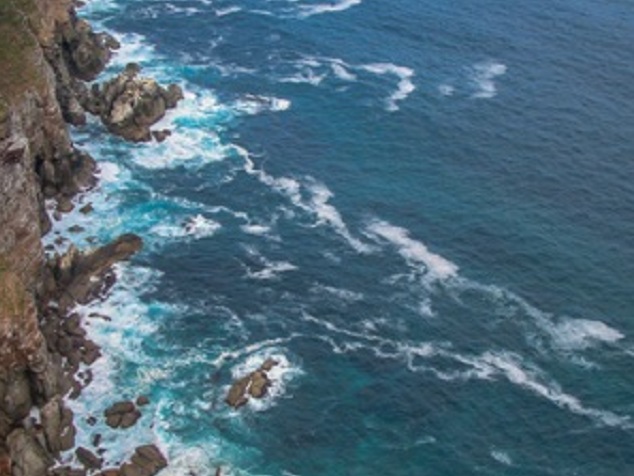Rising seas from warming climate threaten major cities in Africa

An inlet curling up the Liesbeeck River valley as far as Pinelands, with Cape Town harbour entirely submerged. Large parts of Muizenberg and Retreat underwater, with flooding along the peninsula.
This is the magnitude of sea level rise that scientists anticipate in Cape Town if current carbon emission rates continue until the end of this century.
Alarming projections by Climate Central, an international climate change research and advocacy group, show that approximately one million South Africans live in areas that will be inundated by rising seas as the climate warms — unless carbon emissions reduce dramatically by the year 2100.
Research shows that global temperature increases of 4° — termed “business as usual” by climate scientists, corresponding to current rates of emissions — will lock in almost nine metres of global sea level rise by melting glaciers, ice caps, and polar ice sheets. The expansion of seawater as it warms will compound these effects.
“Carbon pollution casts a long shadow,” Climate Central explains on their map visualisation of different sea level rise scenarios.
“[Carbon dioxide] is expected to persist in the atmosphere long enough to prolong temperature increases for hundreds and thousands of years.”
Based on several peer-reviewed studies, the maps translate temperature increases from carbon emissions into projections of long-term sea level rise, modelling local impacts around the world.
It is possible to view predicted consequences across a range of temperatures and emissions pathways.
The maps do not predict how soon the seas will begin rising: it is simpler to calculate how much ice will melt at a given temperature than how quickly it will happen.
This means that it could take between 200 and 2 000 years for Africa’s coastal properties and infrastructure — including train lines, highways and ports — to be engulfed, a process that would cost billions to address.
While the timing is uncertain, there is little doubt among researchers that global warming will trigger these impacts.
“So much recent development has taken place in coastal areas across Africa,” says Alex Apostos, a visiting scholar at the University of Cape Town’s Climate Systems Analysis Group. “A lot of these places are trapped now—there isn’t really anywhere else for them to go.”
At 4° of warming, the five African countries with the largest at-risk populations are Egypt, Nigeria, Senegal, Mozambique and Cote d’Ivoire.
Major coastal cities like Alexandria and Lagos each have more than 3 million people living below predicted new sea levels. Relocating these populations would pose immense logistical challenges.
“Coastal cities in Africa will need to decide whether to allow people to continue building in affected areas,” says Apostos. “It will be difficult to ask people to move.”
Globally, seas would rise enough to submerge land currently home to as many as 760 million people, with 145 million in China alone, according to data from Climate Central. Yet curbing carbon emissions in the next few decades could substantially reduce these impacts.
Meeting the United Nations (UN) international warming target of 2°, for example, would lock in global sea level rise of 4.7m, almost half the increase expected on our current trajectory.
In South Africa this would cut the number of displaced people to an estimated 290 000. Portions of Cape Town harbour, as well as lower Salt River and Woodstock, would still be underwater.
Making this shift would require cutting emissions globally, not just in coastal countries. The window for limiting warming to 2° is narrowing as carbon continues to accumulate in the atmosphere.
“Climate change will have other impacts in inland areas, like threatening crops and fuelling harsher storms,” says Apostos. “We’re all going to lose unless we find ways to tackle this problem.” — News24.











Comments